Graphics, Throttling and Storage Performance
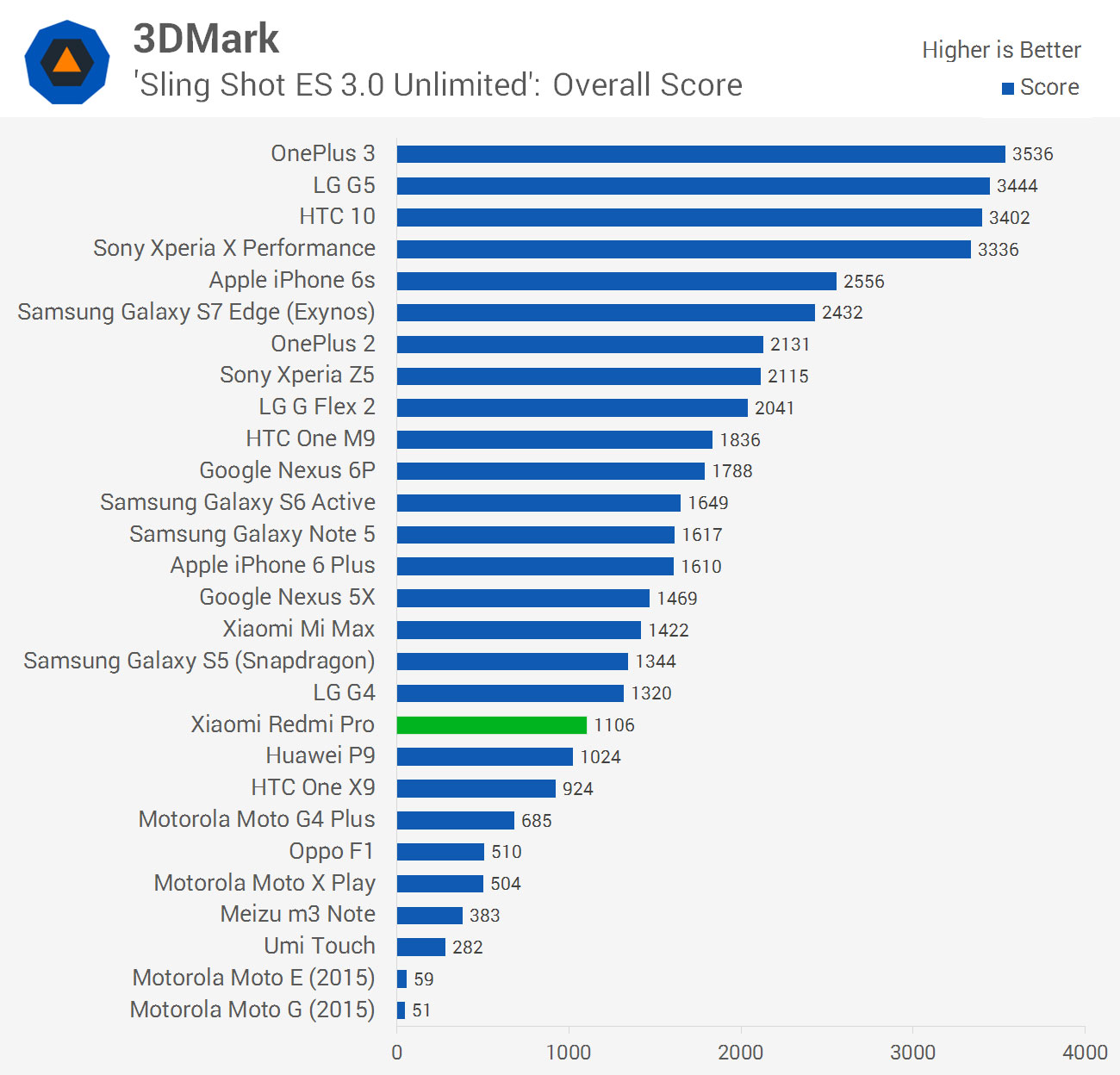
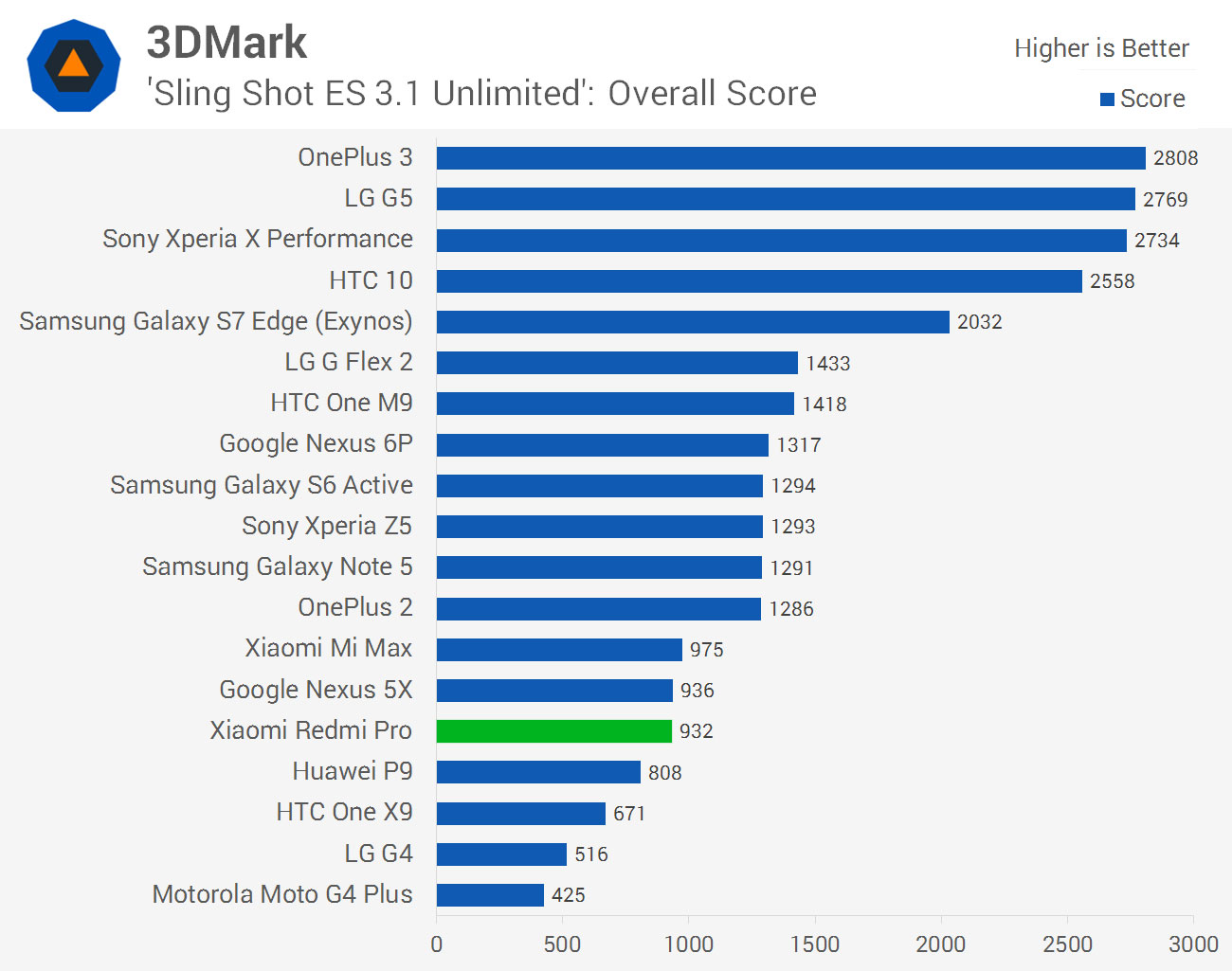
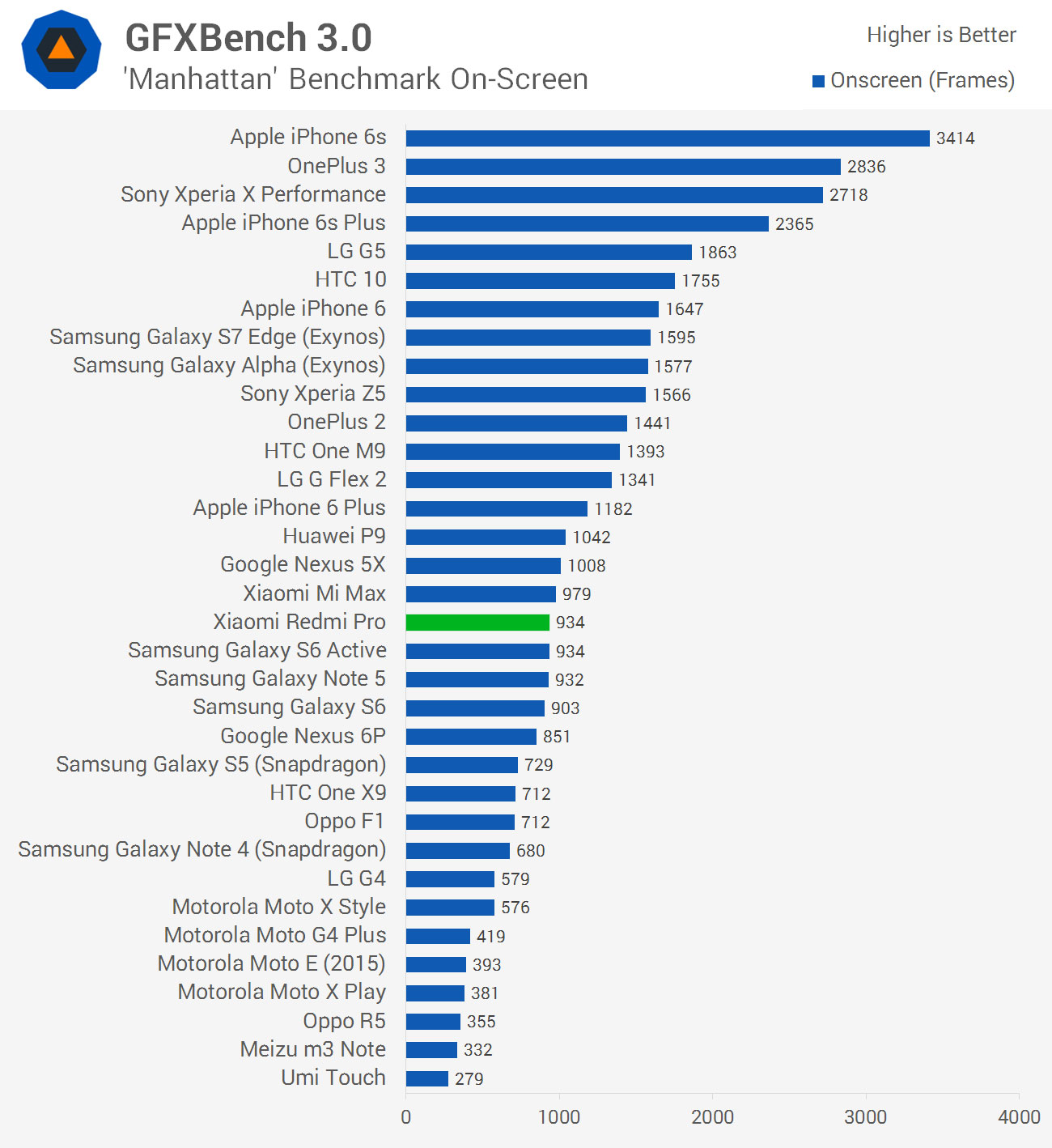
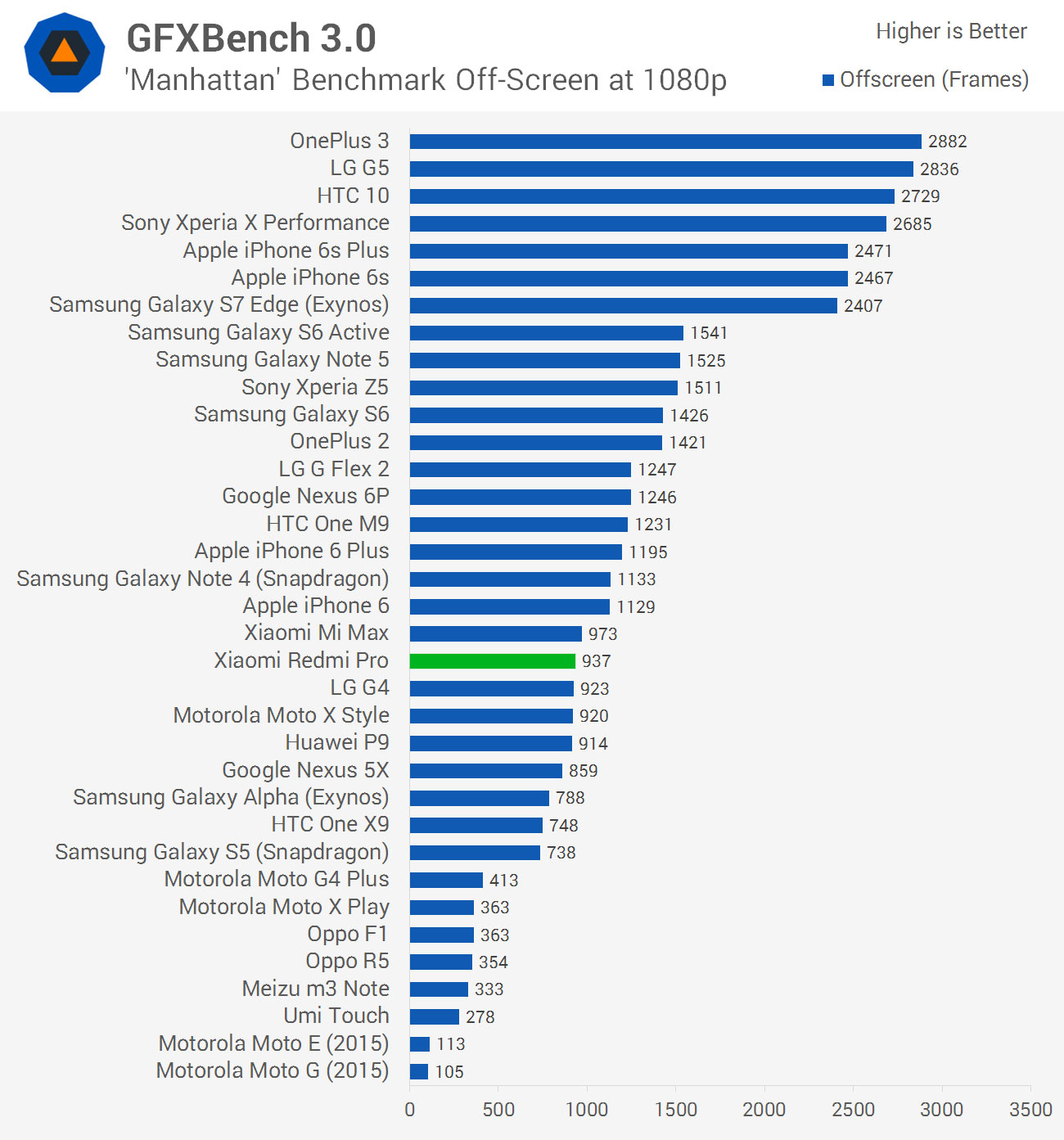
The Mali-T880 MP4 clocked at 700 MHz is a reasonable match for the Adreno 510 in the Snapdragon 650, clocking in just a few percent slower than Qualcomm's offering. The Redmi Pro is significantly faster in GPU workloads than Snapdragon 410 and 617 devices, while the Kirin 955 in the Huawei P9 is 7% faster.
Like with the Snapdragon 650 and Kirin 955, there are no issues with gaming at 1080p on this handset, and graphics performance is pretty good from this mid-range SoC.
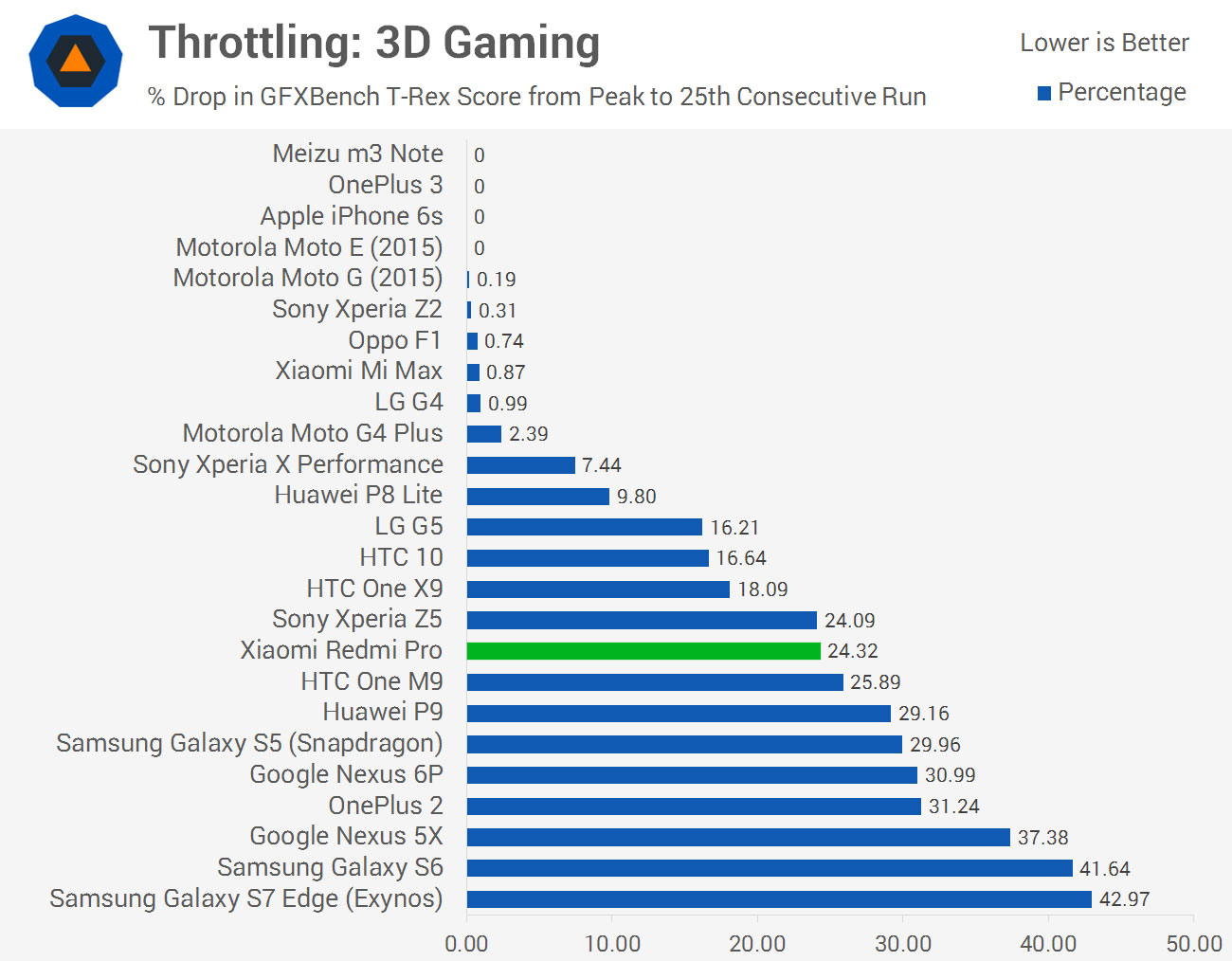
The Redmi Pro throttles by around 25% in heavy graphics workloads after 15 to 20 minutes, which is disappointing considering the Qualcomm Snapdragon 650 does not throttle to the same extent, and outperforms the Helio X20 in long-term performance.
There is a "performance mode" included in the Redmi Pro's software, which extends the time before throttling by five minutes or so. This leads to marginally better sustained performance, at a battery life cost, but it doesn't completely eradicate throttling like in an ideal world.
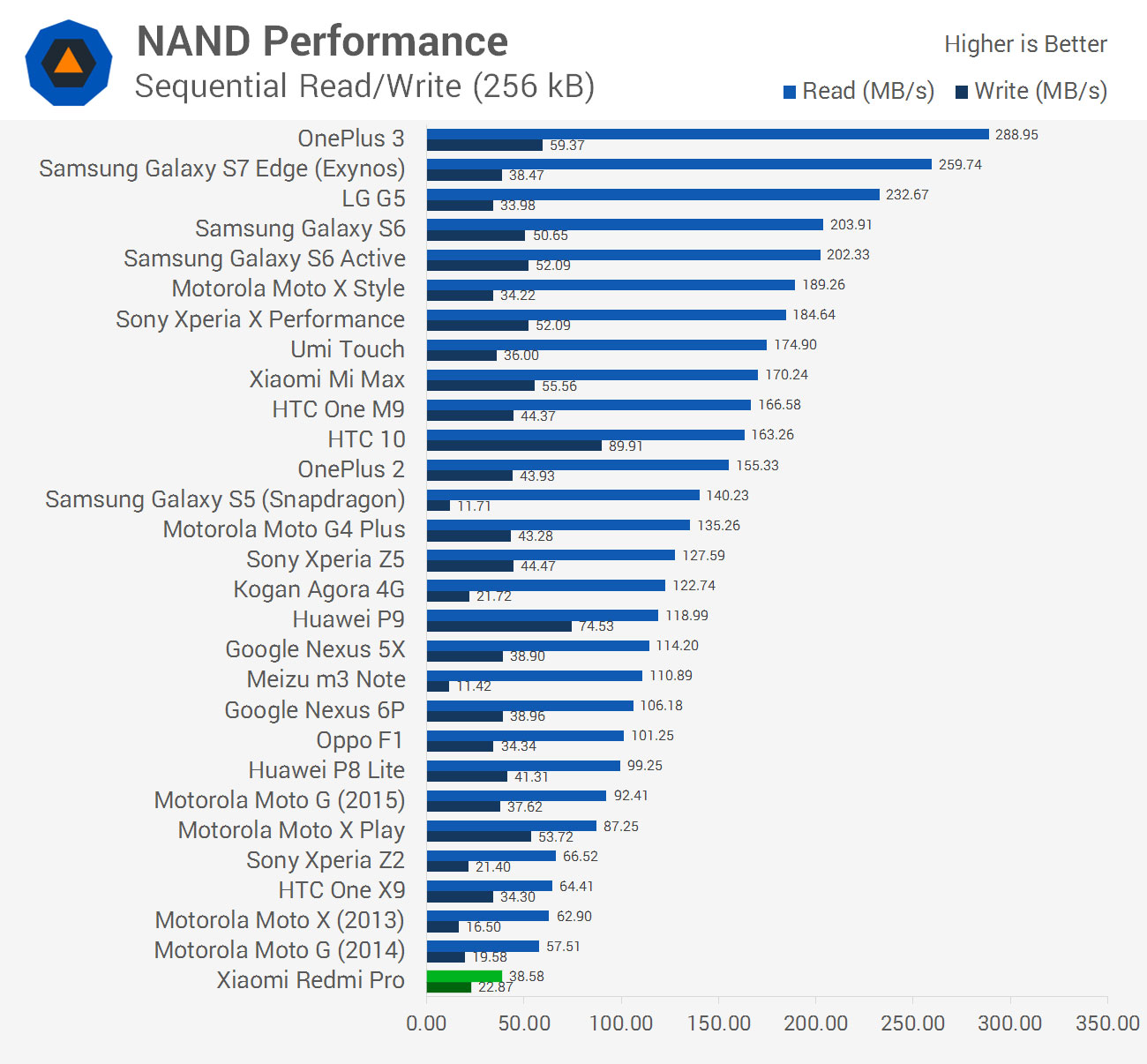
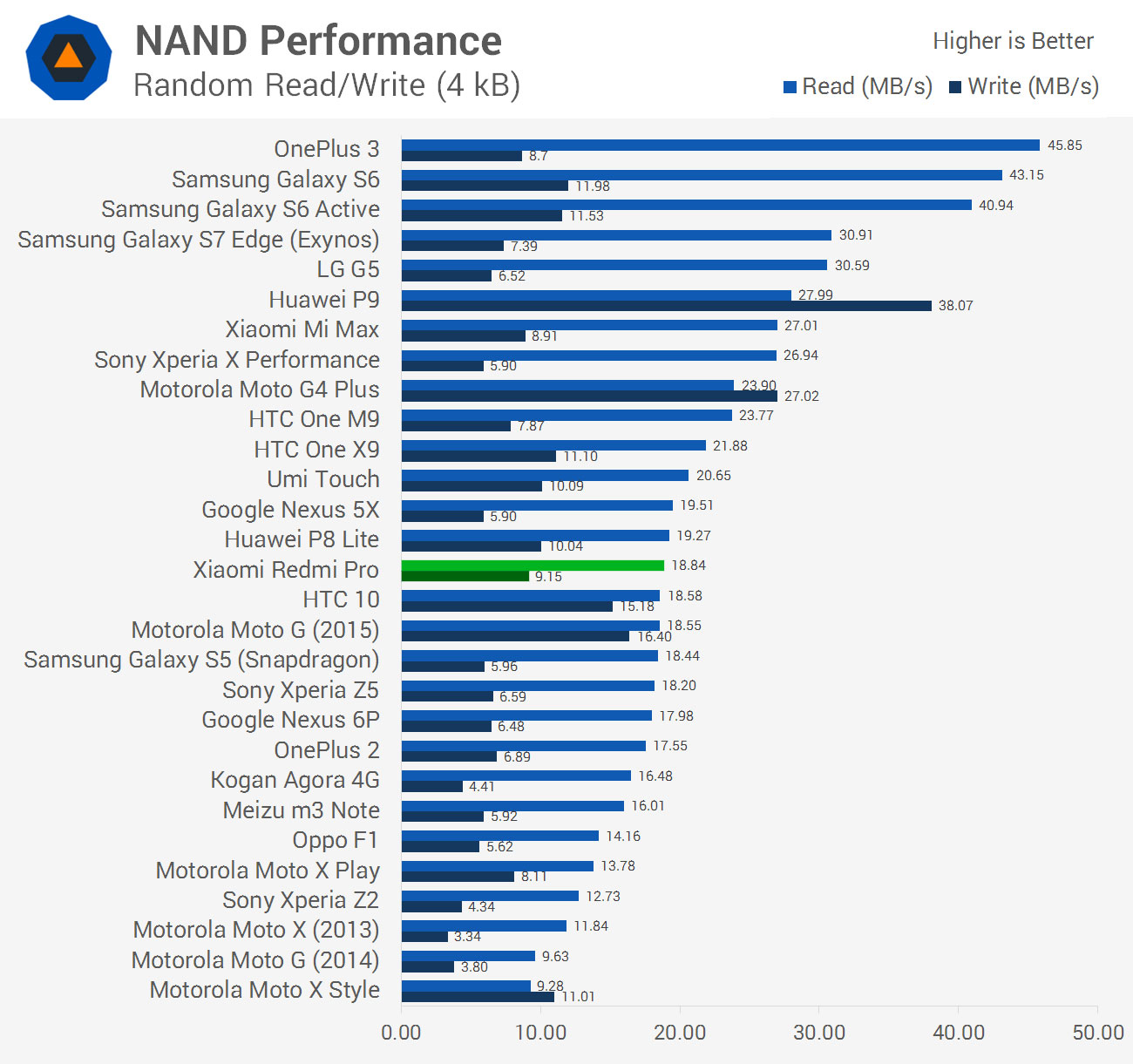
The Redmi Pro's storage performance is bad, leading to slow app loading and slow file copies. Sequential performance is horrendous - the Redmi Pro is the slowest smartphone I've reviewed in this regard - and although random performance is better, it hardly sets the world on fire. Performance here is pretty surprising to be honest, considering the Xiaomi Mi Max posted good NAND transfer speeds, so clearly Xiaomi needs to return to the storage system they deployed previously.
